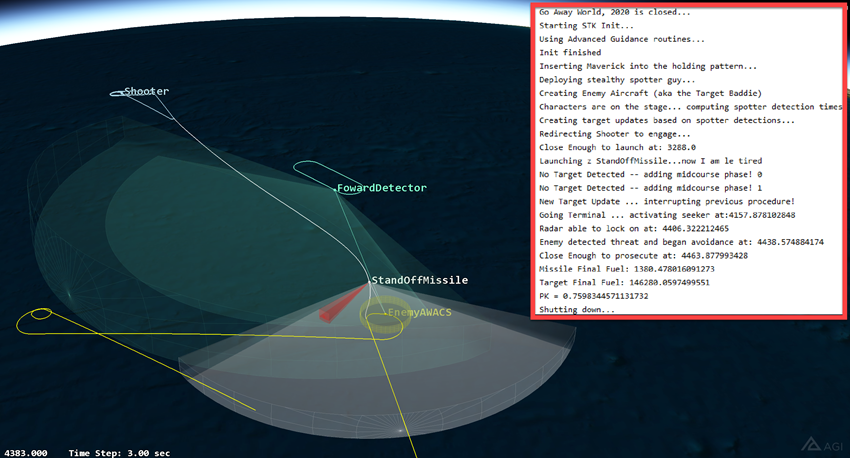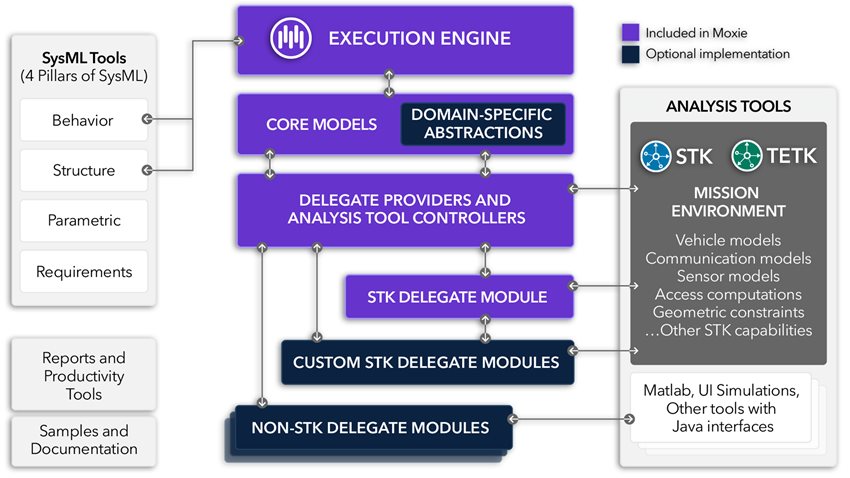New Tricks for an Old Dog – Behavioral Modeling in STK with Moxie
- Feb 8, 2021
- Blog Post
-
Behavior Execution Engine
Digital engineering enables organizations to increase the complexity, robustness, and fidelity in engineering models while simultaneously increasing analytical rigor earlier in the programmatic life cycle. An important concept that has emerged from the continuing evolution of digital engineering is the creation of digital prototypes of the systems being modeled. But for a digital prototype to be truly useful, it needs to sufficiently model both the physical and behavioral characteristics of the system.
STK plays a key role in modeling systems’ physical characteristics and their operational environments for the purpose of digital mission engineering. This approach primarily ascertains system performance and mission satisfaction through single case analysis or large-scale trade space evaluations that look for “bends” in the curve. This deterministic modeling is a sweet spot for STK.
Non-deterministic, or behavioral, analysis has traditionally been integrated with STK mission modeling through the existing automation APIs. This approach marries external logic with STK’s computed metrics and time-events to make decisions, drive the mission simulation forward, and understand the potential outcomes based on the user-proscribed flows.

While this process works, it often results in bespoke simulations that tackle the immediate engineering needs but do not yield a robust, re-usable model. An engineering effort can end up with hundreds of these scripted models, many duplicating aspects of others across the effort. This lack of robust, re-usable models is at odds with the fundamental tenets of Model Based Systems Engineering (MBSE) practices, which underpins digital modeling transformation.
Now imagine a better approach: one that leverages MBSE artifacts — the structural and behavioral models found in software tools like No Magic’s “Cameo” — with a mission engineering application such as STK? What if we create an executable architecture that exercises the formal models within a complex, physics-based mission environment to validate our requirements? How would the resulting realistic assessment of system performance, the observance and understanding of emergent behavior, and model-based mission outcomes benefit the overarching systems engineering life cycle?
These are the questions we asked ourselves at AGI as we immersed ourselves in the digital engineering ecosystem. We explored multiple ways to tackle this problem with existing software tools and processes. However, none of the approaches we tried produced a satisfactory outcome. Some levied onerous requirements for recreating mission modeling routines within MBSE tools, while others forced the acceptance of lower fidelity analytic routines, and still others resulted in cumbersome bifurcated modeling approaches that juggled multiple interdependencies.
As such, we decided that the best approach was to tackle the problem from a completely different perspective. The result is our new product – Moxie. Moxie’s capabilities integrate your descriptive mission and systems models with physics-based analysis tools to create accurate time and event-based executable architectures. The resultant constructs simulate and evaluate interactions between your models and their common environment to predict mission outcomes, assess capability performance, and enable you to validate design options.

The combination of formal architectures, their associated behaviors, and physics-based analysis tools provides modeling designed to meet the specific simulation requirements. These entities, working in concert, produce a robust end-to-end simulation infrastructure that is tied directly to the foundational data and models and is able to produce answers tailored to the level of complexity your decisions require, across all stages of a program’s life cycle. Learn more today on our Moxie product page.
Moxie Webinar: March 3, 2021

Executing SysML Behavioral Models: It Takes Moxie!
Join us on March 3 to learn how you can transform your SysML models into executable architectures with our new product, Moxie.
Read More
